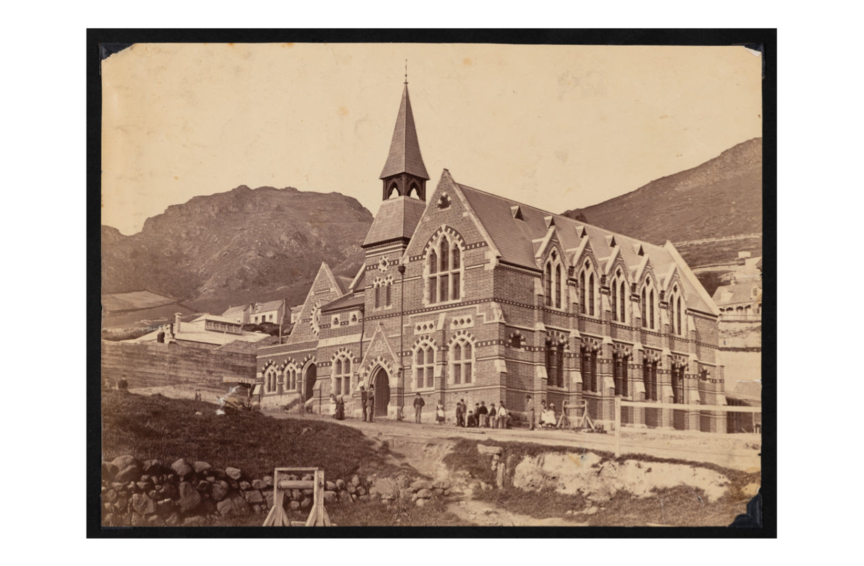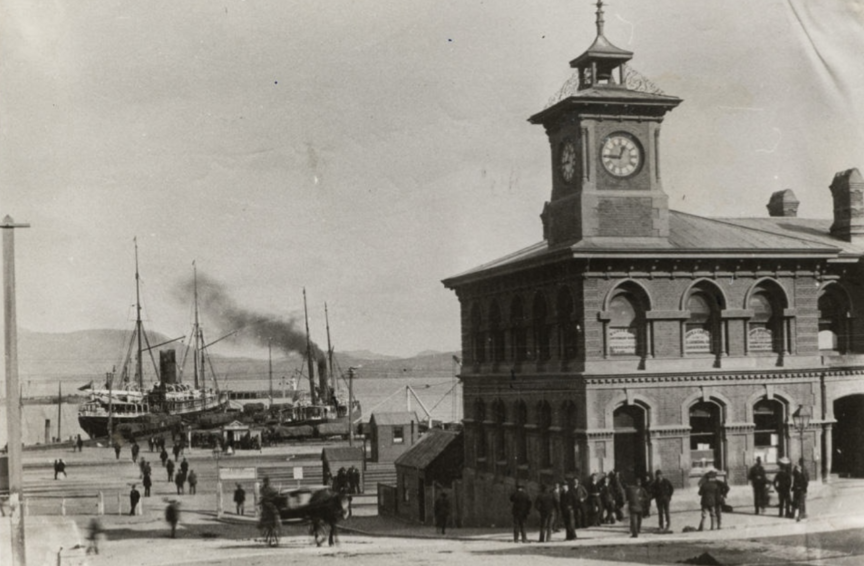PO Box 95
Lyttelton 8841
Te Ūaka recognises Te Hapū o Ngāti Wheke as Mana Whenua and Mana Moana for Te Whakaraupō / Lyttelton Harbour.
Saving Kilwinning Lodge – a close-run thing
By Liz Grant
The building at 26 Canterbury Street once more stands proud in Lyttelton’s landscape. But without some fierce determination and commitment to the town’s heritage, this could have been yet another empty section reminding the community of the damage wrought by the 2010/2011 Canterbury earthquakes.
It was a close-run thing. At the time of the quakes, Kilwinning Lodge was owned by renowned painter Bill Hammond, for whom it was home and studio. Because of the extensive earthquake damage, the building was deemed uninhabitable and Bill had to move out. Lyttelton builder Lester Wilson quickly put in wooden props as a temporary measure to give it some stability. At that time CERA (Christchurch Earthquake Recovery Authority) had been given extensive powers and could order demolition. One day in 2011, word came through the grapevine that a team was being sent to demolish Kilwinning the following day. Nobody had informed Bill.
Locals rallied. Christchurch engineer Endel Lust got a stay put on the order, but was granted only 30 days to come up with a safety plan. Jane McBride, Bill’s widow, said that in the end Bill spent around $30,000 on measures to make Kilwinning safe, until such time as it could be properly restored. It was then a case of finding a buyer who would take on what would undoubtedly be a complex and expensive repair. In December 2015, Bill sold Kilwinning to Kotahi Engineering Studio, “There were a few interested buyers,” said Jane, “but these were the right people”.
As locally-based structural engineers, the team at Kotahi (formerly Structex) were aware how many historic Lyttelton buildings had been lost, and knew they had the expertise to restore this one example of the town’s heritage. In 2015, Kilwinning Lodge became a Listed Heritage Place in the Christchurch District Plan in recognition of its historical and social significance. For almost 120 years it had been home to Lyttelton Freemasons, until it was bought by Hammond in 2000. Kotahi’s plan was to retain key elements of the building’s design and style, such as historic masonic symbols, but also to make sure it could be used as a modern office space.
Bill Hammond was very pleased that Kilwinning was being restored with such care. Sadly he did not get to see it finished – he died in January 2021.
It was a huge and complex undertaking. For a long time the dominant visual of the building was the exterior bracing – essential due to structural damage in the triple brick walls. The team built new foundations and structural walls, which required removing the original walls and foundation, section by section. Support structures, such as steel posts, were introduced into the external walls of the second storey, which was remarkably undamaged. When the original brick foundation was removed, the foundation stone was revealed. In a cavity underneath were coins of the day, a scroll with the name of the lodge, the date of the consecration ceremony and the names of the master and officers of the lodge. Along the way any heritage materials that could be preserved or repurposed were retained.
Restoring Kilwinning Lodge was a really challenging project. On top of the engineering complexities, there was COVID, supply chain issues, time delays, escalating costs and a difficult site. But Kotahi held their nerve. The restoration was completed in May 2023 and Kilwinning Lodge is now Kotahi’s Christchurch office space.
The Canterbury Kilwinning Lodge had been formed in Lyttelton in 1875, when the Freemasons bought the land, beginning construction of the building three years later. It was designed by lodge member John Barnes, a London-born builder and joiner who arrived in New Zealand in 1874. Originally it was a substantial single-storey brick building featuring classical elements such as the entrance columns, which have been retained in the restoration. This style of architecture was associated with the masonic movement. The building was consecrated on 13 October 1881.
All Masonic lodges in New Zealand at the time were founded under an English or Scottish Constitution. Kilwinning Lodge was the 585th lodge under the Scottish Constitution. In the early 1890s it became the 23rd lodge of the new Grand Lodge of New Zealand. Freemasonry had grown strongly in the late 19th and early 20th centuries, playing an important role in New Zealand as a philanthropic organisation, and in local politics.
John Grubb is celebrated as the builder of one of the oldest surviving colonial cottages in Lyttelton, now a listed historic place. He was actively involved in the Freemasonry movement. He was a founder of Kilwinning Lodge, and for many years its treasurer.
In 1903 the original building was badly damaged by fire. In that rebuild the brick walls were kept and a first floor was added with a timber façade with corrugated iron on the rear and side walls. When Hammond bought Kilwinning, he had windows put into the harbour-facing side of the first floor, which gave it “beautiful light and a great view”, said Jane McBride.
Kotahi Engineering Studio has held several popular community open days and has received very positive feedback about what they have achieved. “Lyttelton people have a strong connection to this building”, said Jo Leabourn of Kotahi. Not only has the community applauded the firm’s dedication to this landmark Lyttelton building, Kotahi recently received two Property Council of New Zealand awards:
NZ Commercial Project Awards 2024 – Gold
Property Industry Awards 2024 – Excellence

